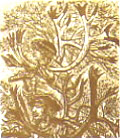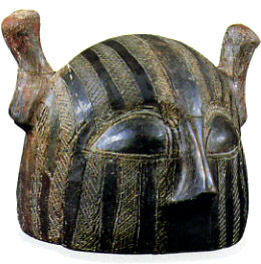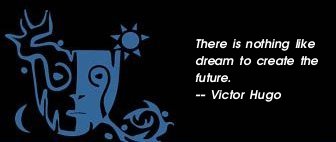|

Here We Come A-Caroling
By John and Caitlin Matthews
John and Caitlin Matthews, presenters at Mythic Journeys 2004 and 2006, teach worldwide and are the authors
of more than 70 books primarily about the Arthurian, Celtic, shamanic and spiritual traditions. John's best loved works include
The Celtic Shaman, Healing the Wounded King, and The Winter Solstice. Caitlin's books include
Singing the Soul Back Home, Celtic Devotional, and Sophia, Goddess of Wisdom. They are the
joint authors of The Western Way, The Encyclopedia of Western Wisdom, and The Arthurian Tarot.
The Matthews have given their written permission to quote from The Winter Solstice.
This is copyrighted material and may be reproduced only with written permission.
For information on the U.S. edition of their books, contact
Quest Books,
and for U. K. readers or for more information, their website is
Hallowquest.org.uk .

The custom of singing carols at Christmas is itself an old one. A carol is properly a song with a dance, and singing and
dancing are never far apart at this time. If we look at some of the songs of Midwinter, particularly those that are to do with
animals, or with animal disguises, we find something very much like a magical bestiary emerging.
In Shakespeare's As You Like It, there is a song concerning the wearing of stag's antlers, that goes:
What what shall he have
that killed the deer?
His leather skin and horns to wear.
Take you no scorn to wear a horn
It was a crest ere thou wast born,
Thy father's father bore
and thy father wore it too
The horn, the horn, the lusty horn
Is not a thing to laugh to scorn.
Indeed not! For throughout northern Europe the wearing of antlers or horns is an ancient and important ritual act
that dates back thousands of years. Throughout the North the Winter season begins with the rutting of deer in October.
This is a time when normally quiet glens and deep forests ring with the roaring and bellowing of stags and the clash of their
great branching antlers. Perhaps this yearly struggle may have played a part in the fact that deer have long been perceived
as sacred animals. Certainly it is easy to see how they might have become associated with the age-old battle between
the old year and the new.

Song of the Deer
The oldest known animal masks are of deer — they were unearthed in Britain at Star Carr near Scarborough, and
dated to 7500 B.C. No fewer than twenty-five deer frontlets were found there, with antlers still attached to a plate
of bone that had holes drilled through it, so that the whole thing could be attached to a helmet. A reconstruction of
one of these masks can be seen in the British Museum in London. It suggests that over nine thousand years ago our
ancestors were disguising themselves as deer, perhaps in order to hunt them. Likewise the oldest known masks found
among the Native American tribes are of deer, and numerous deer-hunting songs have been preserved, such as this one,
found in a wonderful collection called Yaki Deer Songs, collected and edited by Larry Evers and Feklipe S. Molina:
Although unseen in the wilderness
I am just running,
My antler crown with these three branches
Is showing, moving.
Over there, I, in the center
Of the flower-covered grove,
I am walking,
My antler crown with these three branches
Is showing, moving.
These songs provide an intimate portrayal of the hunt, just as they must once have done among the indigenous
tribes of northern Europe.
The Horn Dance
In Britain, in the area extending roughly between Burton-upon-Trent and Stafford, the sacred role of the deer
has been preserved in a custom that dates back at least to the early Middle Ages. The "Abbot's Bromley Horn Dance,"
once danced at Christmas time but now on the Sunday after September 4th, consists of six dancers carrying huge racks
of reindeer horns. These are immensely heavy and some have been carbon dated to A.D. 1000. They are accompanied
by a hobby-horse, a boy with a bow and arrow, a She-Male (see page 162) with a pot and ladle, and a fiddler. The
dancers move about the village to an ancient, haunting tune that still sends chills up the spine as it approaches through
the dawn light.
The Old Buck
A similar custom is still celebrated in the United States in North Carolina, where the Old Buck, a steer's head held
up by two men garbed in a white sheet, goes about frightening folk and demanding money with menaces. Around
New Orleans the echo of an older French folk belief is to be seen every Christmas, when a huge beribboned ox, known
as le grand boeuf, is paraded through the streets, bedecked with holly on its spreading horns.
—John Matthews, The Winter Solstice
With contributions from Caitlin Matthews
(From Chapter 5, pp. 141, 142)
Return to Passages Menu
|

